Workshop scraps and leftover materials often end up in the trash, but with a little creativity, they can be repurposed into useful tools and projects. This article explores 25 creative ways to reuse common workshop scraps to help you save money, reduce waste, and unleash your DIY potential. From hardware cloth hangers to homemade wind chimes, these ideas will inspire you to look at your workshop leftovers in a new light.
1. Create Hanging Storage With Hardware Cloth from Your Workshop
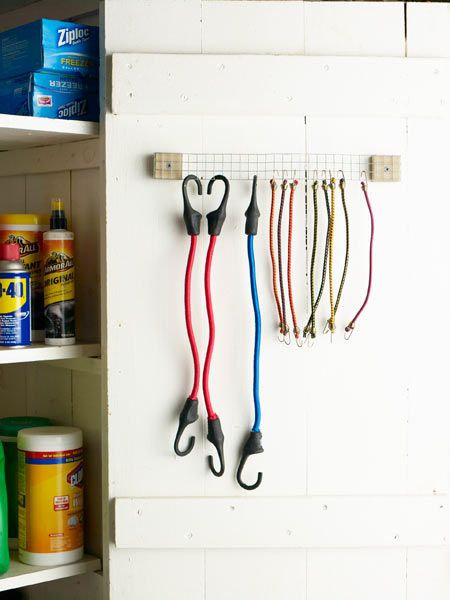
Hardware cloth is a versatile material that can be easily transformed into a practical storage solution for your workshop. This simple DIY project not only keeps cords organized but also makes use of leftover hardware cloth and scrap wood. To create a hanging organizer for bungee cords or other tangle-prone items, follow these steps:
- Cut a 3-by-12-inch strip of hardware cloth.
- Staple each end of the strip to a 3-by-3-inch piece of scrap wood.
- Attach the hanger to your garage wall or workshop.
- Hook one end of each cord in the mesh for easy storage and access.
2. Attach Your Garbage Bin Lid with Workshop Scraps
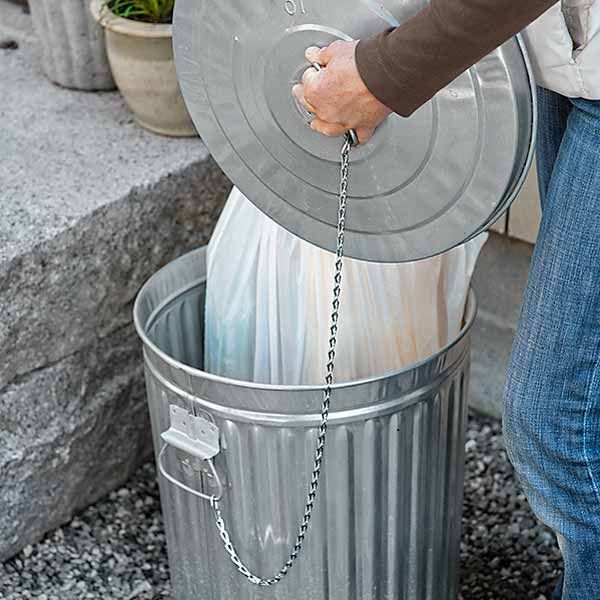
Garbage bin lids have a tendency to disappear, but a simple chain can solve this problem. Use a short length of chain to link the top of your garbage bin to one of its handles. This easy fix ensures that your bin’s lid stays put, even on windy days or when the bin gets knocked over.
3. Use Paint Stirrers To Raise a Planter
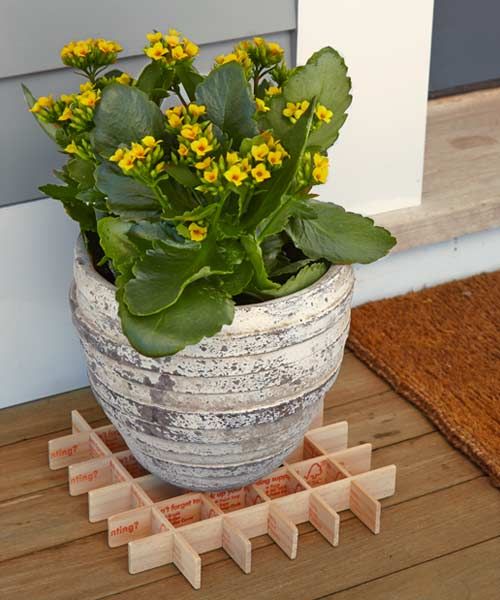
Don’t toss those free paint stirrers from your last painting project. Instead, repurpose them into a clever planter riser that prevents deck stains and rot. This simple solution protects your deck and gives new life to often-discarded paint stirrers. Here’s how:
- Cut notches into the stir sticks every 1-and-1/2 inches.
- Assemble the notched sticks into a grid pattern.
- Place the grid under a potted plant to elevate it and allow for drainage.
4. Use Weatherstripping from Your Workshop To Spread Stain
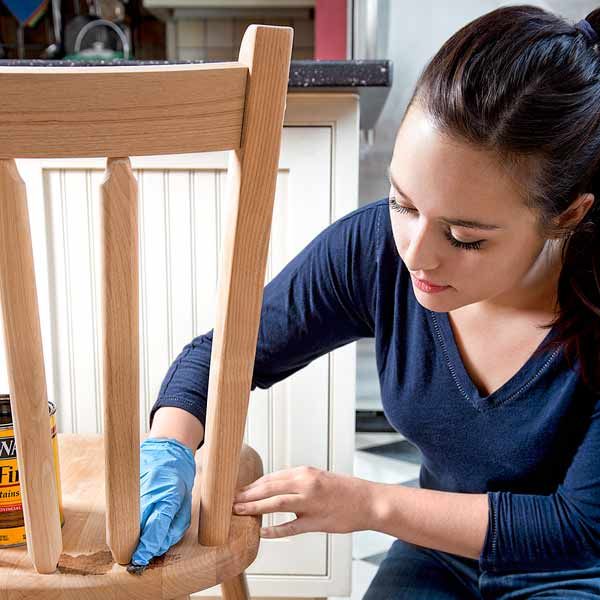
Leftover weatherstripping can be repurposed as a handy staining tool. Cut felt weatherstripping into small squares to use as applicators for spreading stain in tight corners and intricate areas of furniture. It makes it easier to get precise applications in tight spots and helps you make use of weatherstripping scraps that might otherwise go to waste.
5. Use Sandpaper Scraps To Spiff Up Tile Grout
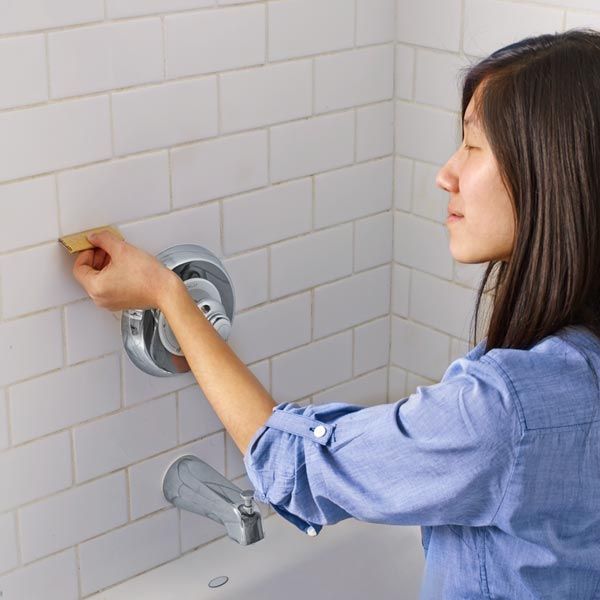
Before tossing out used sandpaper, consider giving it new life as a grout cleaner. Folded fine-grit sandpaper can effectively remove stains from tile grout with gentle friction. Follow these steps for best results:
- Cover glazed tile surfaces with tape to protect them from scratches.
- Gently rub the folded sandpaper along the grout lines.
- Clean away any debris with a damp cloth.
- Once the grout is clean and dry, apply a sealant to protect it from future stains.
6. Prop Up a Painting Project With Planting Pots from Your Workshop
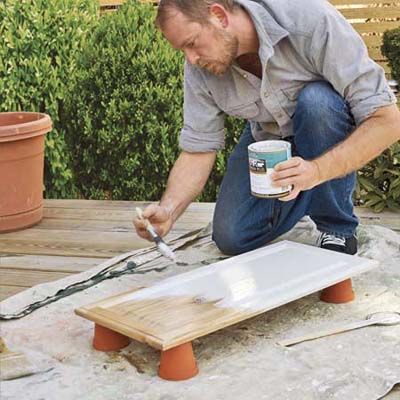
Plastic planting pots can serve as impromptu painting supports for small projects. Use four or more pots to elevate cabinet doors, trim pieces, or other items you’re painting. This technique allows you to easily reach all sides of the object, ensuring even coverage and preventing wet paint from sticking to your work surface.
7. Use Leftover Shellac To Restore Old Hardware
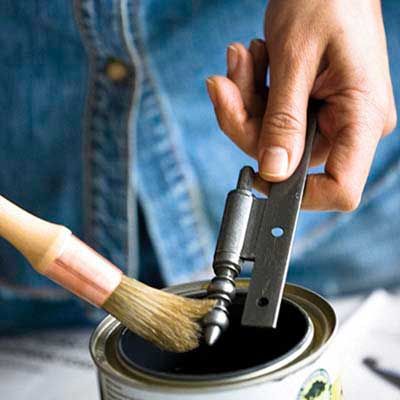
Leftover shellac can breathe new life into old hardware. After cleaning hinges, knobs, and pulls to remove dirt and paint drips, apply a coat of clear shellac. This restores the hardware’s appearance and helps prevent brass pieces from tarnishing.
8. Use Carpet Scraps To Cushion Knees When Gardening
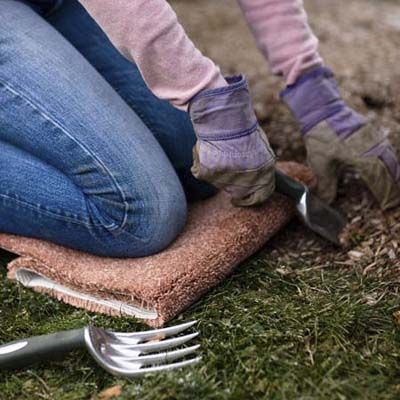
Don’t let carpet scraps go to waste. Roll up a piece of leftover carpet to create a comfortable kneeling pad for gardening tasks. This DIY cushion is perfect for spreading mulch, planting flowers, or weeding. It provides relief for your knees during extended periods of ground-level work.
9. Use Car Wax from Your Workshop To Keep Appliances Fingerprint-Free
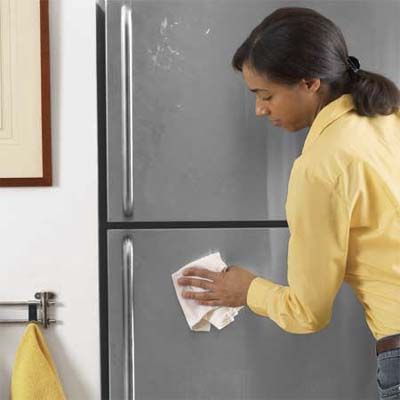
Leftover car wax can be repurposed to keep your stainless-steel appliances looking pristine. Apply a thin coat of car wax to refrigerators and stoves, then buff clean. This treatment helps appliances resist fingerprints and smudges, keeping them looking showroom-fresh with minimal effort.
10. Use Sand From Your Workshop To Hold Open a Door

Excess sand from a project can be transformed into a decorative doorstop. Follow these steps:
- Fill a sealed ziplock bag with sand.
- Center the sand-filled bag on a square of fabric.
- Gather the fabric at the top of the bag and secure it with raffia or a decorative tie.
- Place the finished doorstop in front of a door to keep it open.
11. Use Spare Copper Pipe To Make a Wind Chime
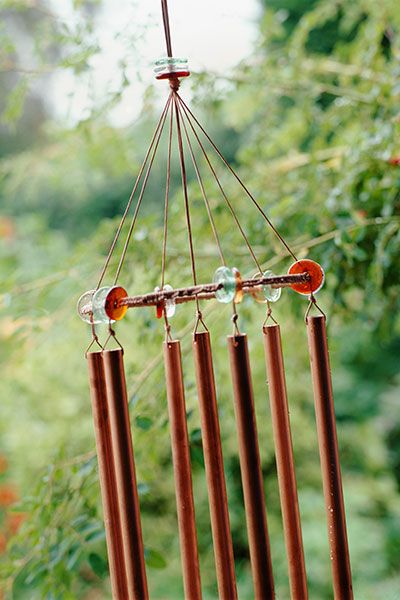
Scraps of copper pipe can be transformed into a relaxing wind chime. The result is a unique, handcrafted wind chime that adds both visual and auditory appeal to your outdoor space. Here’s how:
- Cut various lengths of copper tube (longer pieces produce deeper sounds).
- Drill a hole about an inch from the top of each piece.
- Thread fishing line through the holes.
- Hang the pipes from a wooden disc or other sturdy base.
12. Use Drywall Corner Bead To Lift Up a Small Paint Project
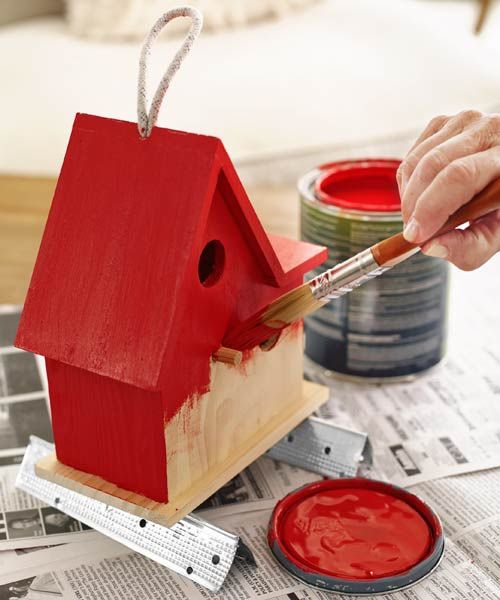
Leftover drywall corner bead can serve as an impromptu painting support. Place two short lengths of bead on your work surface with the folded edges facing up. Rest your painting project across these pieces to elevate it, allowing easier access to all sides and preventing wet paint from sticking to your work area.
13. Use Scrap Window Screens To Keep Soil Inside a Flowerpot

Old window screens can find new life in your garden. Cut a patch of screen to fit the bottom of a flowerpot before adding soil. This prevents dirt from washing out through the drainage hole while still allowing water to pass through, keeping your plants healthy and your surfaces clean.
14. Use Scrap Vinyl Tiles To Create Plant Coasters
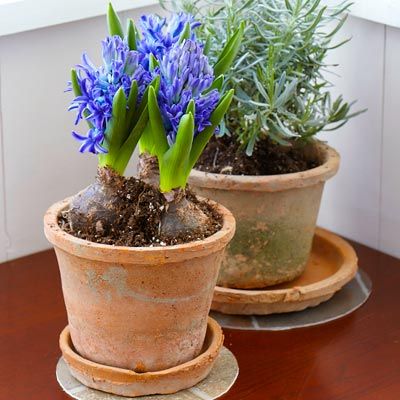
Transform leftover vinyl tiles into practical plant coasters that protect your surfaces from water damage. Here’s how:
- Cut two vinyl tiles into matching circles.
- Stick the tiles back-to-back for added durability.
- Place potted plants on these DIY coasters to prevent water rings and scratches.
15. Use Bricks from Your Workshop To Make Literary Bookends

Give spare bricks or masonry blocks a literary makeover by turning them into decorative bookends. Paint faux book jackets inspired by your favorite classic novels onto bricks using acrylic paint and a calligraphy pen. Display these unique bookends proudly alongside your real books for a conversation-starting shelf accent. You can also use them in your garden as fun stepping stones or decor around your flower beds.
16. Use Scrap Wood Dowels To Hang Curtains
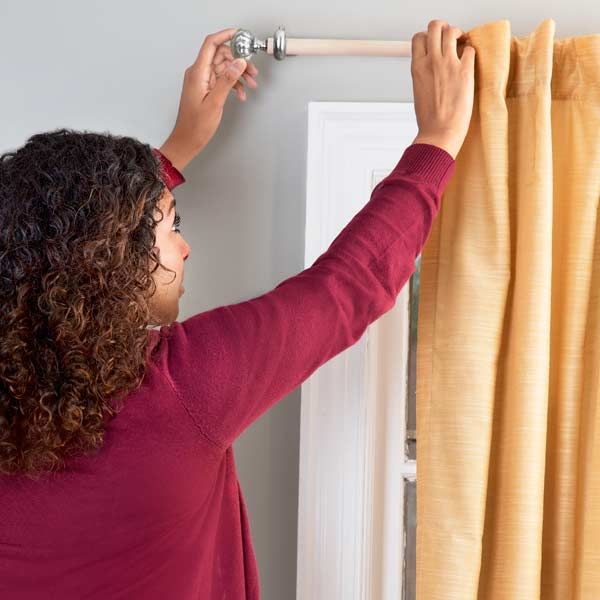
Leftover wood dowels can be repurposed into budget-friendly curtain rods. This DIY solution provides a custom look at a fraction of the cost of store-bought curtain rods. Follow these steps:
- Cut a 1-and1/2-inch dowel to your desired length, extending 3 to 6 inches past the window casing on each side.
- Drill pilot holes in the dowel ends to accept threaded cabinet-knob finials.
- Mount brackets to the wall, ensuring they’re securely fastened to studs.
- Place the dowel rod on the brackets and add your curtains.
17. Use Leftover Pipe Insulation To Prop Up Paintbrushes
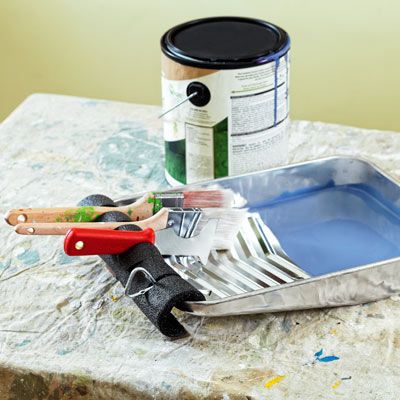
Pipe insulation can be repurposed into a handy paintbrush holder for your paint tray. Simply slip the insulation over the edge of the tray and cut notches to securely hold the brush handles. This keeps bristles suspended above the paint, preventing them from becoming oversaturated and maintaining their shape between uses.
18. Use Leftover Chalk To Cinch a Screw
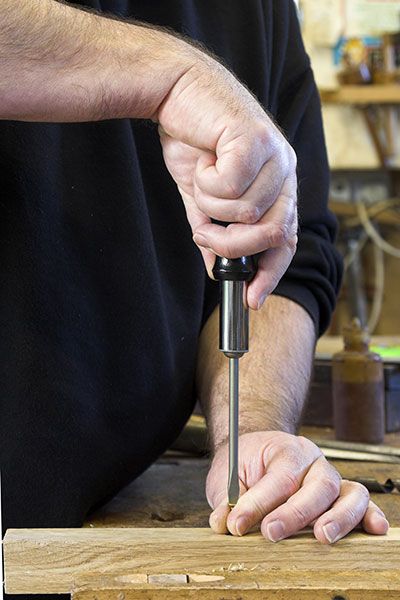
Before discarding old chalk, put it to use in your workshop. Scraping both sides of a flat screwdriver on a piece of chalk creates a slight grip that helps prevent the screwdriver from slipping off screw heads. This simple trick can make driving screws easier and reduce the risk of stripping them.
19. Use PVC from Your Workshop To Help Collect Leaves
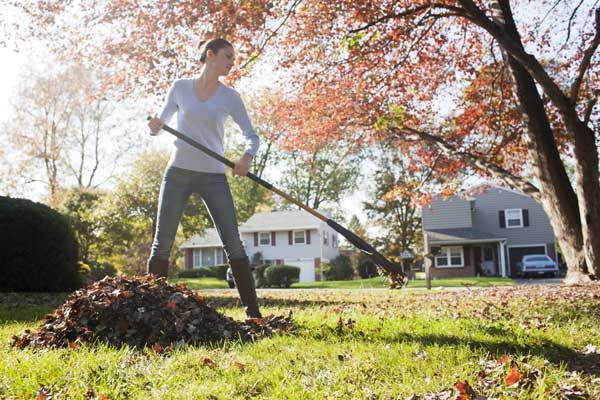
Repurpose PVC pipe into a leaf collection aid with this tip from This Old House plumbing and heating expert Richard Trethewey. Create a PVC frame that clamps onto a garbage bag, holding it open like a giant dustpan. This makes raking leaves directly into the bag much easier and more efficient.
20. Use Leftover Foam Spray To Quiet a Washing Machine
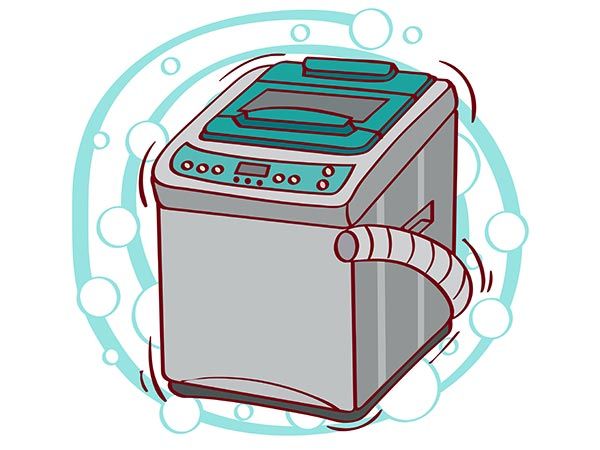
Leftover foam spray can be used to reduce washing machine noise. Apply the foam along the water supply pipes where they meet the walls to dampen spin-cycle vibrations. This simple fix can reduce the noise your washing machine makes during operation.
21. Use a Leftover Garden Hose To Grip Buckets
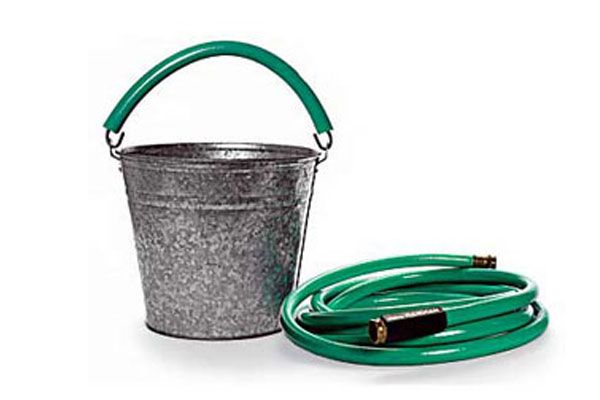
Before disposing of an old garden hose, cut a section to use as a grip enhancer for wire bucket handles. Slip the hose piece over the handle to provide a more comfortable and secure grip, making it easier to carry heavy loads.
22. Use Wood Flooring Scraps To Create a Cleat
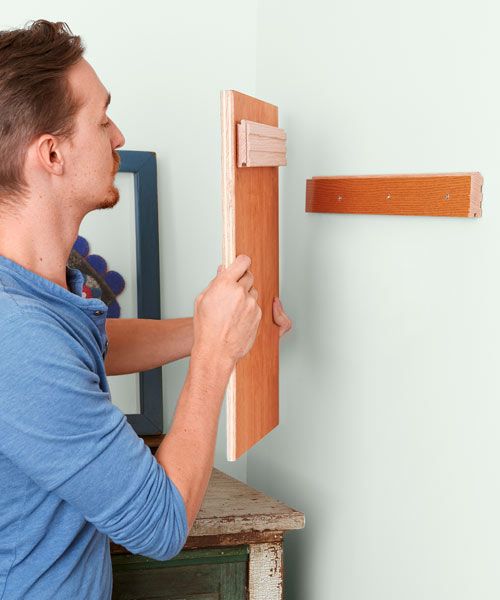
Leftover wood flooring can be repurposed into a sturdy hanging cleat for heavy objects. This method provides a secure and nearly invisible hanging solution for heavy items and is a safe and practical way to use up scrap wood. Here’s how:
- Cut two pieces of flooring slightly shorter than the width of the object you want to hang.
- Screw one piece, groove-side down, to the back of the object.
- Fasten the second piece, tongue-side up, to the wall, ensuring it’s secured to at least two studs.
- Hang the object by lowering its groove onto the tongue mounted on the wall.
23. Use Scrap Drywall Screws To Sub for a Stopper
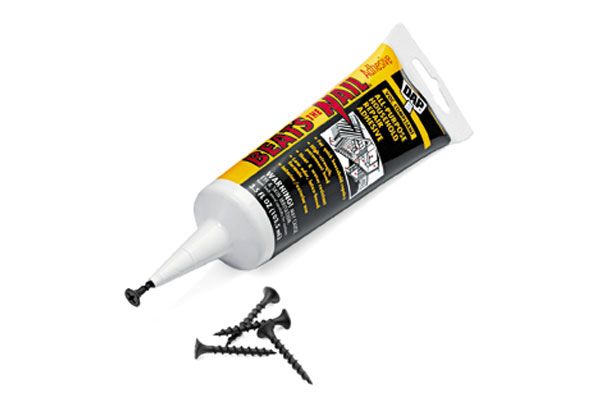
Drywall screws can serve as makeshift stoppers for tubes of glue or caulk. Simply screw one into the nozzle to clear and seal it. Leave the screw in place for a top that easily screws off when you need to use the product again.
24. Use a Drywall Bucket To Carry Garden Tools
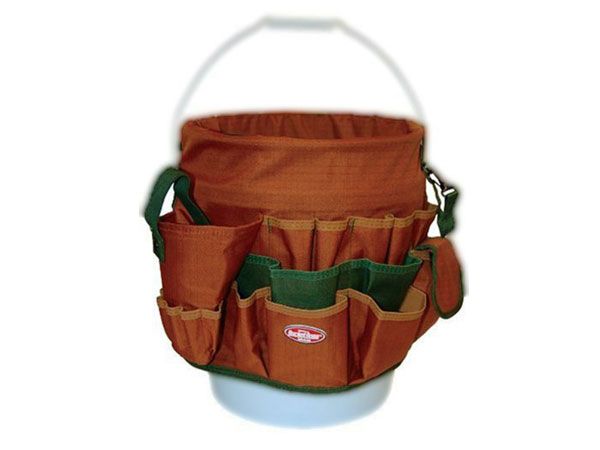
Transform a drywall bucket into a portable garden tool carrier. Wrap a canvas tool apron around the outside of the bucket to create multiple pockets for storing pruners and other small tools. This setup provides both storage for your tools and a receptacle for garden waste, making your outdoor work more efficient.
25. Use Sawdust From Your Workshop To Soak Up Spills

Don’t discard sawdust from your woodworking projects. Keep a bucket of sawdust handy in your workshop or garage to quickly contain and absorb spills of oil, paint, or other liquids. Sawdust’s high absorbency makes it an excellent natural alternative to commercial spill cleanup products. It’s a simple and resourceful solution.
